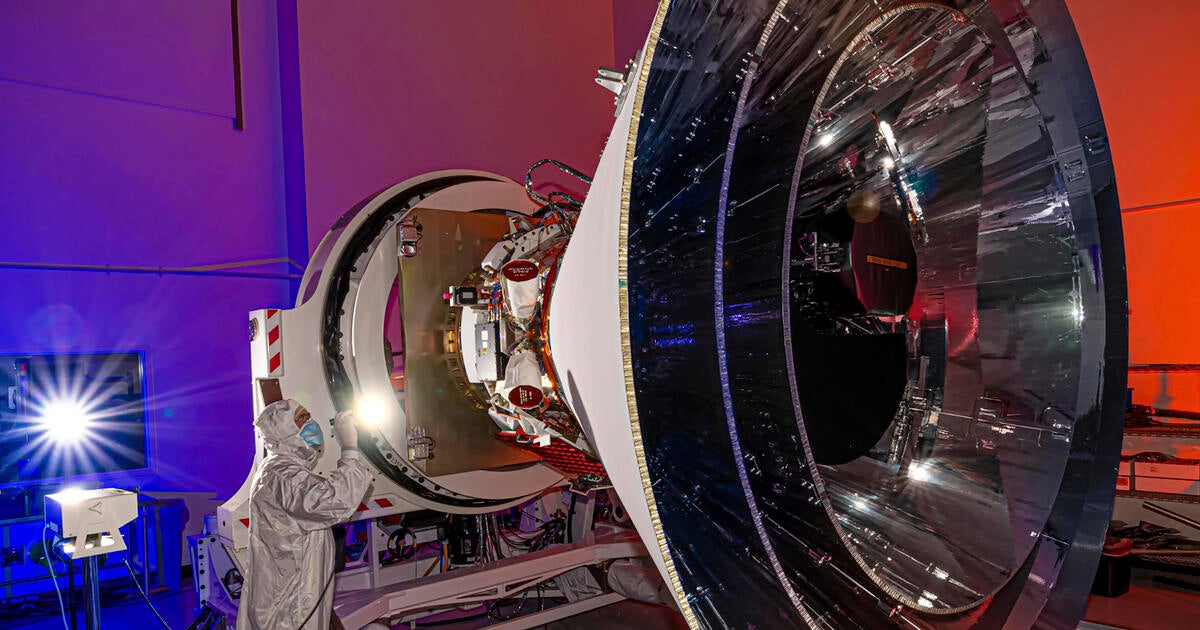NASA’s Latest Space Telescope Soars: A New Era in Cosmic Exploration
In a historic moment for space exploration, NASA has successfully launched its newest space telescope aboard a SpaceX Falcon 9 rocket from California’s Vandenberg Space Force Base. This groundbreaking mission not only signifies a major leap forward in our understanding of the cosmos but also exemplifies the power of collaboration between government and private sectors in advancing space technology.
The Launch: A Milestone in Space Collaboration
On a clear day, with the sun hanging high in a blue sky, the Falcon 9 rocket ignited its engines and ascended into the heavens, carrying the state-of-the-art telescope designed to explore the mysteries of the universe. The launch, which took place on [insert launch date], was celebrated by scientists, engineers, and space enthusiasts alike as a testament to human ingenuity and determination.
SpaceX, founded by Elon Musk, has been at the forefront of space innovation, bringing a fresh approach to satellite launches and interplanetary missions. The successful deployment of NASA’s latest space telescope showcases the effectiveness of public-private partnerships in achieving ambitious goals. SpaceX’s reusable rocket technology not only reduces costs but also increases the frequency of launches, allowing for more extensive exploration opportunities.
The Telescope: What Makes It Unique?
NASA’s latest space telescope, officially named the [insert telescope name], is equipped with cutting-edge technology that sets it apart from its predecessors. This telescope is designed to observe the universe in unprecedented detail, aiming to answer some of the most profound questions in astrophysics. Here are some key features:
- Advanced Optics: The telescope incorporates advanced optical systems that allow it to capture images with exceptional clarity, enabling astronomers to see further back in time than ever before.
- Multi-Wavelength Capabilities: Unlike previous telescopes, this instrument can observe in multiple wavelengths, including infrared and ultraviolet. This capability is crucial for studying phenomena such as star formation, galaxy evolution, and the atmospheres of exoplanets.
- Automated Operation: With its sophisticated onboard software, the telescope can autonomously identify and track celestial objects, making the observation process more efficient.
Unraveling Cosmic Mysteries
The primary mission of NASA’s latest space telescope is to delve deeper into the universe’s mysteries, including the formation of stars, the nature of dark matter, and the search for extraterrestrial life. By observing distant galaxies and cosmic phenomena, scientists hope to gain insights into the fundamental processes that govern the universe.
Key Objectives of the Mission
The telescope’s mission includes several ambitious objectives:
- Studying Exoplanets: One of the telescope’s primary goals is to identify and analyze the atmospheres of exoplanets. Understanding the chemical composition of these distant worlds could shed light on their potential habitability.
- Investigating Stellar Evolution: The telescope will focus on different stages of star formation, providing critical data on how stars evolve over time and the conditions necessary for their formation.
- Mapping Dark Matter: By studying the gravitational effects of dark matter on visible matter, the telescope will contribute to our understanding of this mysterious substance that makes up a significant portion of the universe.
A Collaborative Effort
This mission is a prime example of how NASA and SpaceX can work together to achieve groundbreaking advancements in space exploration. NASA provides the scientific expertise and mission objectives, while SpaceX offers innovative launch solutions and technology. Such collaboration is becoming increasingly vital in an era where space exploration demands more efficiency and cost-effectiveness.
The partnership has also opened new avenues for international collaboration, as countries around the globe are keen to participate in missions that promise to expand our knowledge of the universe.
The Future of Space Exploration
As NASA’s latest space telescope begins its journey through the cosmos, it symbolizes more than just a technological achievement. It represents humanity’s unwavering quest for knowledge and our desire to understand our place in the universe. The data collected from this mission will not only enhance our scientific understanding but also inspire future generations of scientists, engineers, and explorers.
Implications for Science and Society
The implications of this mission extend beyond the realm of astronomy. The technological advancements developed for the telescope can lead to innovations in various fields, including telecommunications, materials science, and robotics. Moreover, the discoveries made may challenge our existing perceptions and philosophies about life beyond Earth.
Looking Ahead
As we look to the future, the successful launch of NASA’s latest space telescope marks a new chapter in the story of human exploration. With an increasing number of missions planned, including potential manned missions to Mars and the establishment of lunar bases, the collaborative spirit exemplified by NASA and SpaceX is crucial for the advancement of space science.
In conclusion, NASA’s latest space telescope soaring into orbit aboard SpaceX’s Falcon 9 is more than just a technological feat; it’s a beacon of hope for the future of humanity’s exploration of the cosmos. As we stand on the brink of new discoveries, we are reminded of the importance of collaboration, innovation, and the relentless pursuit of knowledge.
As we await the first results from this mission, one thing is clear: the universe has many secrets yet to be unveiled, and with each launch, we come a step closer to understanding the grand tapestry of existence that binds us all.
See more Future Tech Daily

